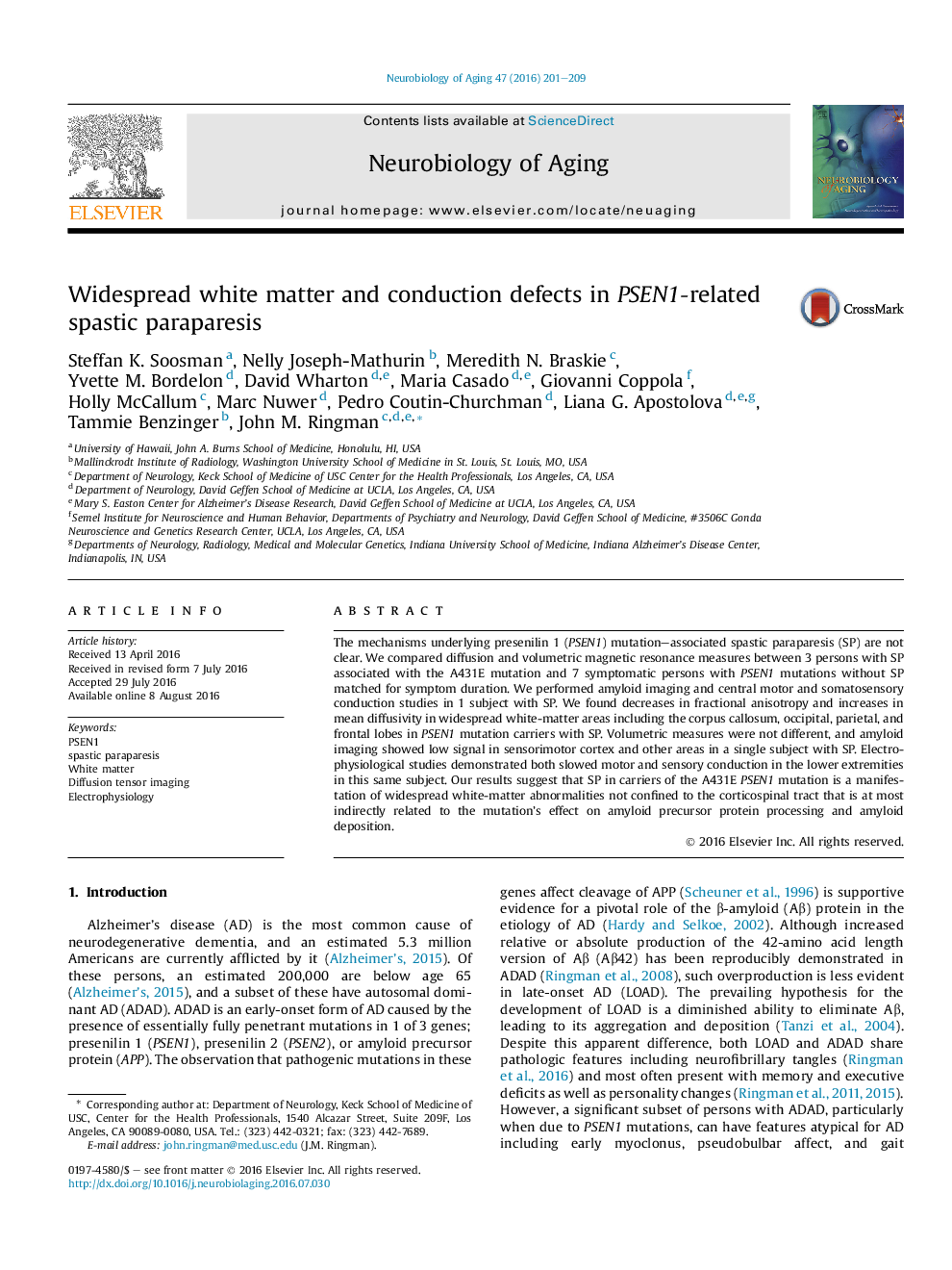| Article ID | Journal | Published Year | Pages | File Type |
|---|---|---|---|---|
| 6803269 | Neurobiology of Aging | 2016 | 9 Pages |
Abstract
The mechanisms underlying presenilin 1 (PSEN1) mutation-associated spastic paraparesis (SP) are not clear. We compared diffusion and volumetric magnetic resonance measures between 3 persons with SP associated with the A431E mutation and 7 symptomatic persons with PSEN1 mutations without SP matched for symptom duration. We performed amyloid imaging and central motor and somatosensory conduction studies in 1 subject with SP. We found decreases in fractional anisotropy and increases in mean diffusivity in widespread white-matter areas including the corpus callosum, occipital, parietal, and frontal lobes in PSEN1 mutation carriers with SP. Volumetric measures were not different, and amyloid imaging showed low signal in sensorimotor cortex and other areas in a single subject with SP. Electrophysiological studies demonstrated both slowed motor and sensory conduction in the lower extremities in this same subject. Our results suggest that SP in carriers of the A431E PSEN1 mutation is a manifestation of widespread white-matter abnormalities not confined to the corticospinal tract that is at most indirectly related to the mutation's effect on amyloid precursor protein processing and amyloid deposition.
Related Topics
Life Sciences
Biochemistry, Genetics and Molecular Biology
Ageing
Authors
Steffan K. Soosman, Nelly Joseph-Mathurin, Meredith N. Braskie, Yvette M. Bordelon, David Wharton, Maria Casado, Giovanni Coppola, Holly McCallum, Marc Nuwer, Pedro Coutin-Churchman, Liana G. Apostolova, Tammie Benzinger, John M. Ringman,
